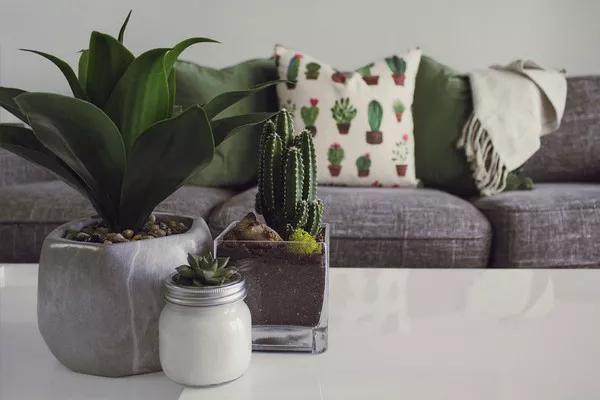Succulents have gained immense popularity in the realm of indoor and outdoor gardening, admired for their unique shapes, vibrant colors, and low-maintenance nature. The key to a thriving succulent lies in understanding its specific water requirements. In this article, we delve into the nuanced art of watering small succulents, exploring factors such as soil, container type, and environmental conditions to ensure these resilient plants flourish in their surroundings.
Understanding the Succulent’s Unique Watering Needs
Succulents, with their thick, fleshy leaves and stems, have adapted to thrive in arid environments with minimal rainfall. Their water storage capabilities enable them to withstand periods of drought, making them well-suited for low-maintenance gardening. However, despite their hardiness, succulents require a careful balance when it comes to watering, as overwatering can be just as detrimental as underwatering. The key is to mimic the natural conditions of their native habitats, providing periodic, deep watering followed by periods of dryness.
Choosing the Right Soil for Succulents
The type of soil used for small succulents plays a crucial role in their overall health and water retention. Succulents prefer well-draining soil that prevents water from pooling around their roots, reducing the risk of root rot. A common mix for succulents includes a combination of potting soil, perlite, and coarse sand. This blend allows for proper aeration and drainage, ensuring that water quickly moves through the soil, preventing the roots from becoming waterlogged.
Selecting Suitable Containers for Succulents
Container choice is another important factor in the watering equation for small succulents. Opt for containers with drainage holes to facilitate excess water runoff. This prevents water from accumulating at the bottom of the pot, which can lead to root rot and other moisture-related issues. Additionally, the material of the container can impact water retention. Terracotta pots, for example, absorb excess moisture from the soil, helping to maintain an optimal moisture level for succulents.
See Also: How to plant succulents in the ground?
Watering Frequency and Timing
Determining how much water a small succulent needs involves understanding the watering frequency and timing. Rather than adhering to a strict schedule, observe the soil moisture and adjust your watering routine accordingly. Watering should be done when the top inch of the soil feels dry to the touch. During the growing season, which is typically spring and summer, succulents may require more frequent watering. In contrast, reduce watering during the dormant winter months when succulents experience slower growth.
Deep Watering Techniques for Succulents
Deep watering is a key practice in succulent care, encouraging the development of a robust root system. Instead of light, frequent watering that only moistens the surface, provide a thorough soak that reaches the roots. Water the succulent until you see water escaping through the drainage holes, indicating that the entire root system has received moisture. Allow the soil to dry out completely before the next watering session, preventing waterlogged conditions.
Signs of Overwatering and Underwatering
Recognizing the signs of overwatering and underwatering is essential for adjusting your succulent care routine. Overwatering can lead to yellowing leaves, mushy stems, and an unpleasant odor – indicative of root rot. On the other hand, underwatering may cause the succulent to exhibit shriveled or wrinkled leaves, and in severe cases, the plant may enter a state of dormancy to conserve water. Regularly inspecting your succulent for these signs allows for prompt intervention and adjustment of watering practices.
Factors Influencing Watering Needs
Several factors influence the watering needs of small succulents, and understanding these variables is key to maintaining a healthy plant. Light exposure, temperature, humidity levels, and the type of succulent all play a role in determining how much water a succulent requires. Sun-loving succulents in bright, direct sunlight may need more frequent watering than those in shaded areas. Similarly, succulents in arid climates may demand more water than those in more humid environments.
Seasonal Adjustments in Succulent Watering
Adapting your watering routine to the changing seasons is crucial for succulent care. During the active growing season in spring and summer, succulents require more water as they undergo periods of rapid growth. As winter approaches and daylight hours decrease, succulents enter a dormant phase, necessitating reduced watering to prevent waterlogging. Monitoring environmental conditions and adjusting your watering frequency accordingly ensures that your small succulents receive the care they need throughout the year.
Watering Succulents in Different Growth Phases
Understanding the growth phases of succulents further refines the approach to watering. During the establishment phase, immediately after propagation or transplantation, succulents benefit from slightly more frequent watering to encourage root development. As the succulent matures and its root system becomes more established, you can gradually extend the time between watering sessions. Customizing your watering routine based on the specific growth stage of your succulent contributes to its overall health and vitality.
Advanced Watering Techniques for Succulent Enthusiasts
For succulent enthusiasts seeking to elevate their care practices, advanced watering techniques can be employed to provide optimal conditions for their plants. Bottom watering, where the pot is submerged in water and allowed to absorb moisture from the bottom up, is an effective method that prevents water from settling on the leaves. Additionally, the “soak and dry” method involves thoroughly saturating the soil and allowing it to dry out completely before the next watering, promoting robust root growth.
Conclusion
Successfully nurturing small succulents requires a nuanced understanding of their unique watering needs. By considering factors such as soil composition, container choice, and environmental conditions, you can create an ideal environment for your succulents to thrive. Balancing the art of watering involves providing adequate moisture during active growth periods, adjusting watering frequency based on seasonal changes, and recognizing signs of overwatering or underwatering. With proper care and attention to detail, your small succulents will reward you with vibrant, healthy growth, adding beauty and resilience to your indoor or outdoor space.


